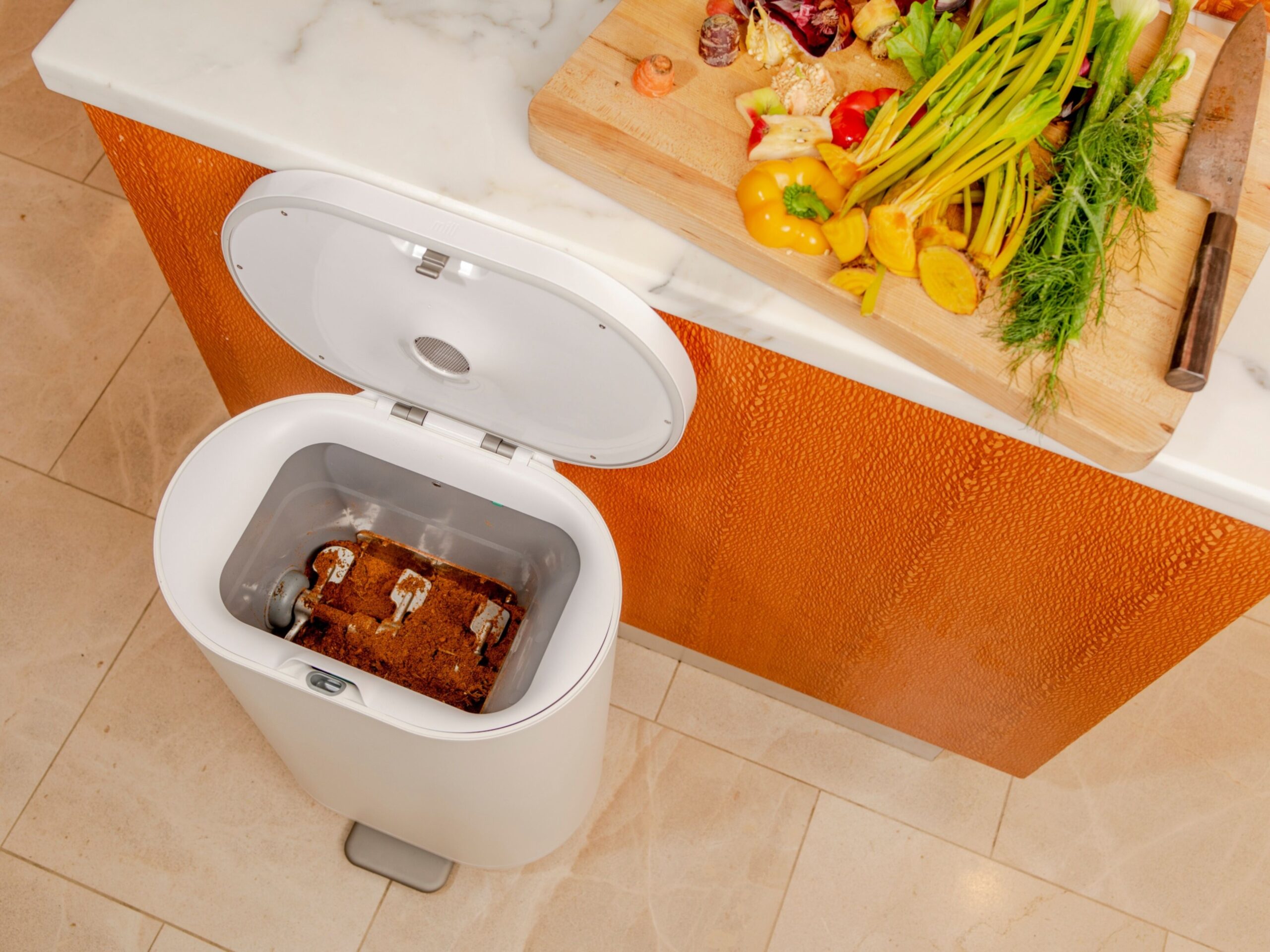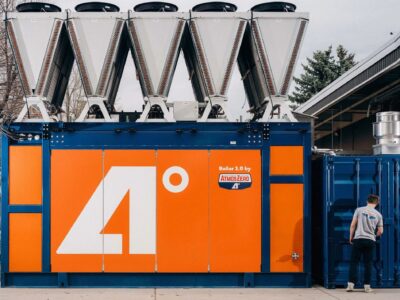(Bloomberg) —
Nobody wants to waste food, but almost everyone does. Americans tossed more than 44 million tons of food into their home garbages in 2021, according to the nonprofit ReFED, making the residential sector responsible for nearly half of all food waste in the US. Now, a startup selling a stylish bin that doubles as a food dehydrator and pulverizer is close to securing a new life for food scraps.
Earlier this month, an Association of American Feed Control Officials committee voted unanimously to approve a definition for “dried recovered household food” as an ingredient in animal feed. The decision came with a safety stamp of approval from the Food and Drug Administration (FDA); after two more procedural votes, the ingredient can come to market.
That’s great news for San Bruno, California-based Mill, and the result of two years of conversations the startup has been having with regulators and feed safety experts.
Founded in 2020, Mill has raised more than $100 million to sell sleek bins that break down food scraps while sitting prettily in household kitchens. For $33 per month, customers drop their uneaten and unspoiled food scraps — including banana peels, avocado pits and fish bones — into the bin, which also sends weight information to a tracking app. The bin turns it all into a mostly odorless, brownish powder which can then be emptied into a box and left out for a mail carrier.
At its facility in Mukilteo, Washington, Mill processes the grounds, inspecting and screening them, performing microbial control and blending them with other households’ grounds to make a consistent chicken feed ingredient. Soon enough, farmers should be able to buy it, which Mill hopes can move the needle on America’s waste footprint and the emissions that come with it.
“If we’re going to decarbonize the economy, we need new systems that are better, faster and cheaper than the ones that exist,” says Mill co-founder Harry Tannenbaum. “It’s exciting to see FDA and AAFCO moving with focus and rigor to fight food waste.” Mill co-founder Matt Rogers was also a co-founder at Nest, the Google-owned smart home company where Tannenbaum was also an early leader.
Read More: Mill Wants You to Pay Not to Trash Your Food
Mill is not the first startup to build its business on a food-waste-to-feed model. Connecticut-based Bright Feeds collects excess food from corporate sources like factories and cafeterias to make feed for a range of species. Do Good Foods in New Jersey, which recently filed for bankruptcy but is still operating, collects supermarket food waste, turns it into chicken feed and then sells the chickens that ate it back to consumers. California’s ReConserve Inc. makes animal feed from the food byproducts of bakeries, cereal and snacks.
By focusing on the biggest source of food waste — the home — Mill is differentiating itself from the competition, while also setting up a tough challenge. Residential food waste is widely dispersed, and reduction efforts depend almost entirely on changing consumer behavior. Getting people to pay for waste pickup, a service most folks don’t foot the bill for directly, is also an obstacle.
Mill won’t disclose the size of its subscriber base or its expectations for profitability, except to say that it has put “thousands” of bins in homes since starting to ship them in April. The company points to the 9,000-plus communities in the US with pay-as-you-throw garbage rates as potential customers. Mill is also running a pilot program in Tacoma, Washington, where residents can save money on their waste bills if they use Mill; and a Pittsburgh, Pennsylvania program that lets some residents try the service at a subsidized rate.
The company doesn’t have a pricing plan for its chicken feed ingredient, but Tannenbaum says there’s “a lot of value” in what they’re making. More sustainable animal feed could also reduce some of the emissions associated with agriculture: About two-thirds of the carbon footprint of eggs, for example, comes from feed, according to Ryan Bennett, executive director of the US Roundtable for Sustainable Poultry and Eggs. But closing any pricing gaps will be important. (Bright Feeds bases its feed price on the corn index, usually coming in about 20% below the price of corn.)
Dana Gunders, executive director of ReFED, lauds Mill for using its clout to break down systemic barriers like AAFCO definitions. But she also cautions against thinking of regulatory hurdles as the largest ones in food waste. “Getting people to send their grounds back is, in my opinion, one of the biggest challenges,” she says. “It’s so interesting that it’s the founders of Nest, because there’s such behavioral components. So who better to take them on?”
To contact the author of this story:
Deena Shanker in New York at dshanker@bloomberg.net
© 2023 Bloomberg L.P.





